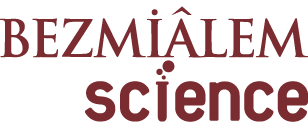ÖZET
Amaç:
Bu çalışmada, çocuk kardiyoloji polikliniğine çarpıntı şikayeti ile başvuran hastaların bilgileri retrospektif olarak incelendi. Bu konu ile ilgili güncel yaklaşımlar derlendi, ayrıca seyrek görülen ve hayati önemi olan hastalıklara dikkat çekilmeye çalışıldı.
Yöntemler:
Ocak 2016 - Haziran 2019 tarihleri arasında 5-18 yaş arasında olan ve çarpıntı şikayeti ile çocuk kardiyoloji polikliniğine başvuran 1680 hasta çalışmaya dahil edildi. Hastaların 714’ü erkek (%42,5) ve 966’sı (%57,5) kız idi. Hastaların elektrokardiyografi (EKG), ekokardiyografi, kardiyovasküler stres test, 24 saat ritim Holter, olay kaydedici ve genetik analiz bilgilerini içeren tüm hastane kayıtları incelendi.
Bulgular:
Hastaların yaş ortalaması 13,5±3,2 yıl (minimum/maksimum: 5-17,8 yıl) idi. Çarpıntı şikayetine 218 hastada göğüs ağrısı, 152’sinde nefes darlığı ve 67’sinde halsizlik şikayeti eşlik ediyordu. Hastalara ait 726 ritim Holter, 165 olay kaydedici, 104 kardiyovasküler stres test incelendi. Hastaların 306’sında (%18,2) disritmi belirlendi. En sık belirlenen disritmiler supraventriküler ekstrasistol (n=171, %55,8) ve ventriküler ekstrasistol (n=82 %26,8) idi. Beş hasta ventriküler taşikardi, bir hasta uzun QTC sendromu, bir hasta katekolaminerjik polimorfik ventriküler taşikardi (VT) tanısı aldı. İki hasta aritmojenik sağ ventrikül displasizi açısından izleme alındı. Hastaların 12’sinde mitral kapak prolapsusu, 8’inde akut romatizmal ateşe bağlı kalp kapak hastalığı ve 7’sinde biküspit aortik kapak belirlendi.
Sonuç:
Çocuklarda yaygın poliklinik başvuru sebeplerinden olan çarpıntı şikayeti sıklıkla iyi huylu patolojilerle ilişkili olsa da ciddi aritmilerin ilk semptomu olabileceği mutlaka akla getirilmelidir. Hayatı tehdit edebilecek çoğu ritim bozukluklarını hastaların iyi bir şekilde analiz edilmesi ve temel kardiyolojik inceleme metodlarının kullanılması ile saptamak mümkündür.



